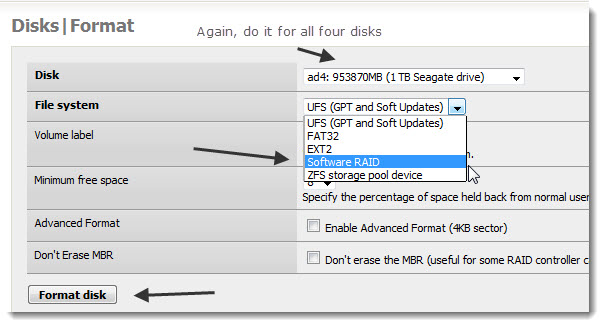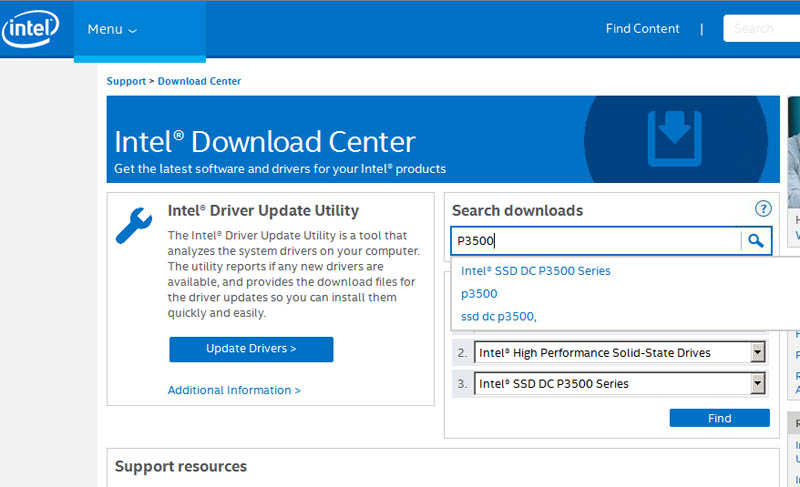Install Esxi Software Raid Download

Software Raid Xp
Aug 29, 2016 - Customer want to build a RAID 1 with two build in SATADOM. But when he did that the esx Installation did not detect the software RAID. So he wants to get a new driver for building up a raid mechanism with SATADOMs that can used by ESXi? The server has 2x SSD of which we want to configure in RAID-1. The motherboard has an onboard RAID (basically software RAID controller). After configuring the RAID-1 array, ESXI shows both disks individually rather than as a single drive. Seems ESXI does not recognise Intel's SW raid.
. Click on the following link:. In the ”Enter a product name or number,” type in the product name, 'Dynamic Smart Array B140i'. Select “get drivers, software, and firmware.”.
Select the appropriate Operating System. Select the Category Driver-Storage Controller. Locate, download, and install the latest available version of the Dynamic Smart Array Controller Driver. Detailed instructions for installing the driver are located under Installing device drivers and Management Agents in the HP Dynamic Smart Array RAID Controller User Guide at the following URL: HP Dynamic Smart Array RAID Controller User Guide: The HP Dynamic Smart Array Controller driver for Linux and VMware (hpdsa) is also available in the latest HP Service Pack for ProLiant (SPP) at the following URL: Dynamic Smart Array functionality, including the hpdsa driver, is included in HP custom images for VMware ESXi distributions, which are also available through hp.com. Linux and VMware customers who do not require RAID functionality may disable RAID mode using the procedures outlined in the HP Dynamic Smart Array RAID Controller User Guide. When RAID mode is disabled, there is no need to obtain or use the HP Dynamic Smart Array Controller closed source driver (hpdsa). In the case that the B140i is used as a data controller, obtain the needed VIB from the following links: VMware ESXi 5.1: VMware ESXi 5.5/6.0: RECEIVE PROACTIVE UPDATES: Receive support alerts (such as Customer Advisories), as well as updates on drivers, software, firmware, and customer replaceable components, proactively via e-mail through HPE Subscriber's Choice.
Sign up for Subscriber's Choice at the following URL: NAVIGATION TIP: For hints on navigating HPE.com to locate the latest drivers, patches, and other support software downloads for ProLiant servers and Options, refer to the. SEARCH TIP: For hints on locating similar documents on HPE.com, refer to the.
Hewlett Packard Enterprise Company shall not be liable for technical or editorial errors or omissions contained herein. The information provided is provided 'as is' without warranty of any kind. To the extent permitted by law, neither HPE nor its affiliates, subcontractors or suppliers will be liable for incidental, special or consequential damages including downtime cost; lost profits; damages relating to the procurement of substitute products or services; or damages for loss of data, or software restoration. The information in this document is subject to change without notice.
Hewlett Packard Enterprise Company and the names of Hewlett Packard Enterprise Company products referenced herein are trademarks of Hewlett Packard Enterprise Company in the United States and other countries. Other product and company names mentioned herein may be trademarks of their respective owners.
Inhaltsverzeichnis. General information Hardware. VMware vSphere Hypervisor 5.x and 6.0 (ESXi) use a filesystem called vmfs5 (formerly vmfs3), which uses GPT and supports drive sizes of up to 64 TiB (formerly 2 TiB). Software RAID is.not. supported by ESXi. The free version of ESXi starting with 5.5 supports a maximum of 4 TB RAM (formerly 32 GB RAM). Network configuration.

VMware vSphere Hypervisor is an 'operating system' designed for pure virtualization and supports neither NAT nor routing. Therefore, only a true bridged setup can be used. To use a subnet an additional single IP needs to be setup as a router VM.
Installation. The installation and configuration of ESXi takes about 20-30 minutes, even without any prior knowledge. Please check out the for further information on installing ESXi. License. After installation the system has a test license, which expires after 60 days. For the long-term usage of the OS a separate (free) license is required. This can be requested by registering on the VMware website:.
Esxi 6.7 Software Raid
License for. License for. The license can be entered via the vSphere Client, under the tab 'Configuration', the section 'Software' and then under the menu item 'Licensed functions'. After selecting this you can click on the 'Edit' button to the right and then enter the license key. Buuz keyboard tatah. Hetzner specific information Installed hardware The Dell PowerEdge models DX150, DX151, DX290, DX291 and DX141 are certified and compatible with all versions from 5.0 onwards. All other models are not certified by VMware, yet in most cases they can be run with VMware vSphere/ESXi.
Compatibility (All information is subject to change.